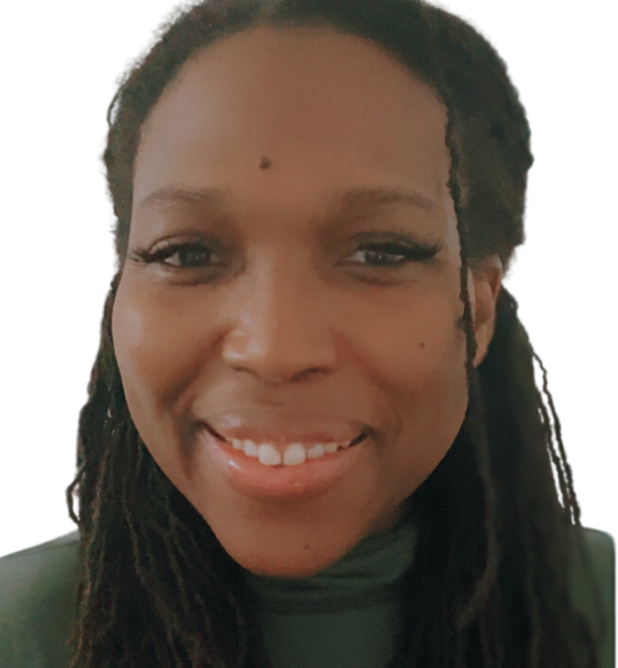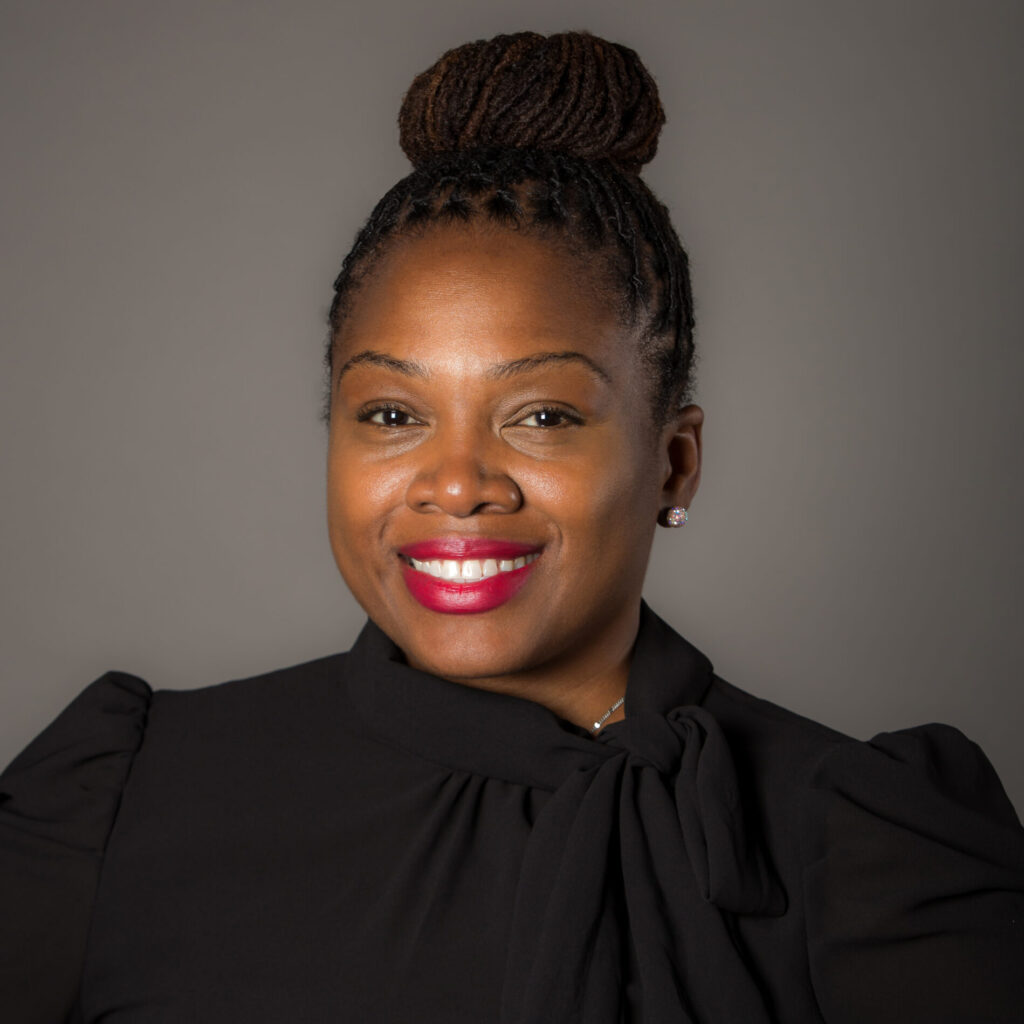New study uncovers policies and practices that contribute to the overrepresentation of Black families in the child welfare system — and provides a roadmap for change
Categories: Bryn King, Faculty, Research
The Youth Wellness Lab’s Mapping Disparities for Black Families research team (left to right), back row: Cherine Milanzi, Andre Laylor, Travonne Edwards, Samira Osei Wireko; front row: Lakeisha Bennett, Favour Aina, Bryn King, Rasnat Chowdhury, Teresa Gallina. Photo by Jim Moore
New research from the Youth Wellness Lab at the University of Toronto has identified key policy and practice areas in Ontario’s child welfare system that create and maintain the over-representation of Black children and families, while also providing recommendations for change. The findings offer child welfare policy makers, frontline workers and leaders a roadmap to meaningfully address the inequitable experiences of Black families.
 “We know that anti-Black racism is a crucial part of the picture, but what we didn’t know before was how, where and when it happens across the system,” says Bryn King, an associate professor in U of T’s Factor-Inwentash Faculty of Social Work (FIFSW) and the Principal Investigator on the Mapping Disparities for Black Families study. “Our new study is the first that speaks directly to people working in child welfare in Ontario about how they make decisions about Black families.”
“We know that anti-Black racism is a crucial part of the picture, but what we didn’t know before was how, where and when it happens across the system,” says Bryn King, an associate professor in U of T’s Factor-Inwentash Faculty of Social Work (FIFSW) and the Principal Investigator on the Mapping Disparities for Black Families study. “Our new study is the first that speaks directly to people working in child welfare in Ontario about how they make decisions about Black families.”
Previous research has found that Black families are more than twice as likely as white families to be referred to and investigated by the province’s child welfare agencies, and a growing body of research shows that anti-Black racism contributes to this disproportionality [PDF].
The Youth Wellness Lab’s new findings — released in a series of public reports — will be vital resources for those working in the field. Key recommendations include strengthening support for Black families experiencing poverty, revising or replacing current eligibility criteria for child welfare services that discriminate against Black families, investing in more community-based parenting support for Black families, and providing training to child welfare supervisors in areas related to anti-Black racism, racial trauma and diverse cultural needs.
 King and Co-Investigator Travonne Edwards, a recent FIFSW doctoral graduate and now an assistant professor in the School of Child and Youth Care at Toronto Metropolitan University, began the study in 2021 with a team at the Youth Wellness Lab, a research collaborative that engages youth and community partners. In this case, the key partner was One Vision One Voice (OVOV), a program funded by the Ministry of Children, Community and Social Services (MCCSS), housed at the Ontario Association of Children’s Aid Societies (OACAS) and informed by the Black community.
King and Co-Investigator Travonne Edwards, a recent FIFSW doctoral graduate and now an assistant professor in the School of Child and Youth Care at Toronto Metropolitan University, began the study in 2021 with a team at the Youth Wellness Lab, a research collaborative that engages youth and community partners. In this case, the key partner was One Vision One Voice (OVOV), a program funded by the Ministry of Children, Community and Social Services (MCCSS), housed at the Ontario Association of Children’s Aid Societies (OACAS) and informed by the Black community.
“This is an understudied area that required urgent attention,” says Edwards, who began his career as a child and youth care practitioner in the Greater Toronto Area, where he saw the child welfare system intervene more frequently and intensively in Black families. He cites striking statistics from the 2018 Ontario Incidence Study of Reported Child Abuse and Neglect: 14 per cent of investigations involve Black children despite them making up just seven per cent of the population, and they are more than twice as likely as white children to be placed in out-of-home care.
 Vania Patrick-Drakes, a 2006 graduate of U of T Scarborough and manager of OVOV, which has collaborated with FIFSW researchers on numerous projects, says the Mapping Disparities for Black Families study was launched to bridge a gap in knowledge. “We needed an understanding of how child welfare service delivery perpetuates disparities for Black families, and we knew from partnering with Travonne and Bryn previously that they were passionate about this subject,” she says.
Vania Patrick-Drakes, a 2006 graduate of U of T Scarborough and manager of OVOV, which has collaborated with FIFSW researchers on numerous projects, says the Mapping Disparities for Black Families study was launched to bridge a gap in knowledge. “We needed an understanding of how child welfare service delivery perpetuates disparities for Black families, and we knew from partnering with Travonne and Bryn previously that they were passionate about this subject,” she says.
The Mapping Disparities for Black Families (MDBF) team conducted individual interviews and/or focus groups with 79 people employed in or adjacent to the child welfare system, including social workers, supervisors, agency leaders, lawyers and more. “We mapped out the points in the system where influential decisions get made – screening, investigation, service provision, placement and reunification – and then asked people involved in each of these areas about their decision-making processes,” says King.
After conducting a preliminary analysis of all these interviews, the research team and OVOV identified four initial themes for additional analyses and consultation with the sector. These included: the strong role of rigid eligibility criteria for child welfare intervention on the over-investigation and treatment of Black families; the oversurveillance of Black families for concerns about physical abuse; the connection between high rates of poverty in Black families and child welfare intervention; and the powerful effect of supervisors, especially those with knowledge of and experience with anti-Black racism, in shaping the treatment of Black families. The research team then invited the research participants and community-based representatives from child welfare to review the findings, refine the analysis and its interpretation, and generate practical solutions for managing the identified concerns.
Many research participants spoke about how Black families experiencing poverty are susceptible to allegations of neglect, for example, leading to referrals for investigation rather than guidance on resources or connections to community supports. “One of our key recommendations is really interrogating and slowing down referrals,” says Edwards. “This involves speaking to the referral source, assuring that they’ve done their due diligence, and supporting them in exploring external resources that may mitigate the risk or safety concern.”
Research participants also described how current child welfare eligibility standards are based on a Eurocentric parenting framework that doesn’t account for cultural differences or the strengths and safety within Black families. “A lot of the findings corroborated what we at OVOV were hearing anecdotally,” says Patrick-Drakes.
In related research, Edwards and King have just begun a SSHRC-funded project, entitled Parenting Under Threat, that will bring together Black families, communities, OVOV and researchers from across the GTA to explore how Black families experience child welfare interventions, with the goal of improving their realities and outcomes. “We also hope to find out what community supports beyond the child welfare system are helpful and effective in strengthening Black families,” he says.
In the upcoming year, the Mapping Disparities for Black Families project will hold a second series of community consultations on additional study findings related to topics such as the screening and oversurveillance of Black families and training for child welfare workers and leaders. They also plan to formally launch the Parenting Under Threat study.
“This is just a first step,” says King. “We now have a lot of data about how anti-Black racism is operating on multiple levels of the child welfare system – in policies, structures and individual decisions – and outside the system. But we also have practical suggestions for how to interrupt the practices and decisions that lead to disparities, and we’re going to keep sharing and expanding on these strategies.”
By Megan Easton
Partner testimonials

“While Black families have shared their experiences navigating child welfare for decades, this project provided a crucial opportunity to identify where disparities occur along the service continuum and strategically focus efforts on reducing them.”
— Keishia Facey, Senior Manager, One Vision One Voice and Learning, and a current PhD student at the University of Toronto OISE

Solomon Owoo, CEO of OACAS, emphasizes the importance of leveraging data to drive transformational and structural change and highlights the urgency of using the narratives emerging from this data to sustain our collective commitment to addressing anti-Black racism.
Interested in learning more? View recent studies by members of the Mapping Disparities in Black Families research team
Bonnie, N & Facey, K with support from King, B., Fallon, B., Joh-Carnella, N., Edwards, T., Kagan-Cassidy, M., Black, T., William, K., Patrick-Drakes, V & Anucha, C. (2022). Understanding the over-representation of Black children in Ontario child welfare services. (Ontario Incidence Study of Reported Child Abuse and Neglect-2018). Toronto, ON: Child Welfare Research Portal.
Edwards, T., McManamna, N., & King, B. (2023). The absence of language: A critical race discourse analysis of Ontario’s child welfare legislation and the impacts on Black families. Child Abuse & Neglect, 143,106249–106249.
Mohamud, F., Edwards, T., Anti-Boasiako, K., William, K., King, J., Igor, E., & King, B. (2021). Racial disparity in the Ontario child welfare system: Conceptualizing policies and practices that drive involvement for Black families. Children and Youth Services Review, 120, 1-13.